Last updated on September 19th, 2023 at 06:18 pm
- Huge amount of cargo space
- Plenty of rear passenger space
- Crowd-pleasing “retro modern” looks
- Expensive (very)
- No seven-seat option yet
- No rear air conditioning controls
Range (WLTP): 251-258 miles Top Speed: 91 mph 0 to 62: 10.2 sec Efficienty: 2.97 miles per kWh
Introduction
Few EVs have created the buzz of the Volkswagen ID. Buzz. The nostalgia for the original Type 2 split-screen van popular in the 1960s has been deliberately harnessed with this car’s reimagined retro looks. During our review period, we had multiple people wave and give us thumbs up about the Buzz. It was the most positive attention we’ve ever received for any EV we’ve driven. That’s not a universal opinion, as some really don’t like the design, but the majority seem to. Either way, this is the first electric passenger van aimed as much at consumers as commercial users, making it a significant vehicle.
Price and Options
There are currently two trim levels of the ID. Buzz available, the Life and Style, with the latter a £4,800 bump over the former. There was a 1st Edition, but that has been sold out for a while now. Even for the Life trim, the basic specification is generous. Standard kit includes 19in wheels, 10-colour ambient lighting, a 10in nav screen, and wireless CarPlay or Android Auto. There's even a rear-view parking camera, heated steering wheel, heated front seats, and a heated windscreen.
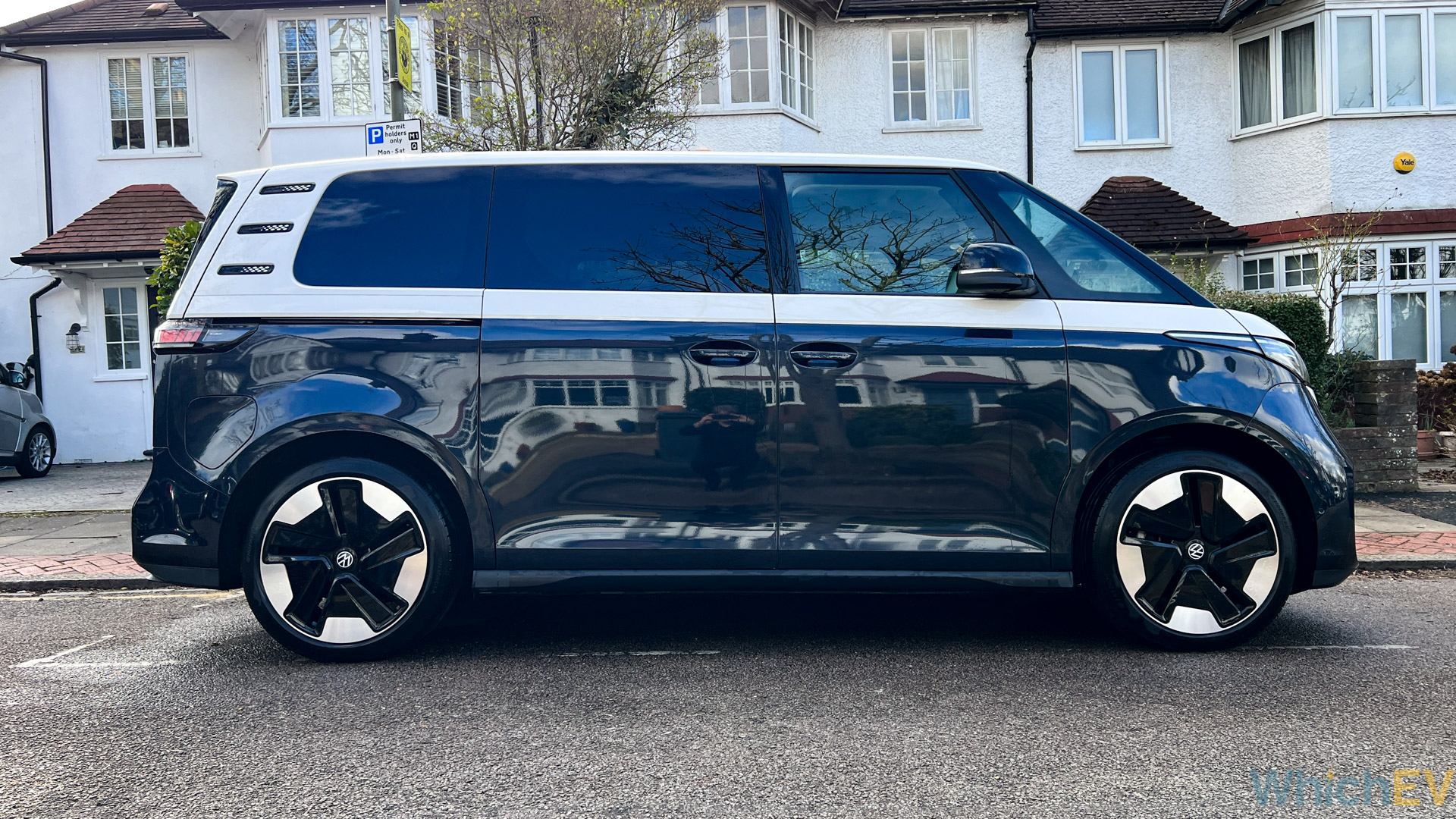
The Style trim adds 20in wheels and 30 ambient colours instead of just 10. There's a power tailgate, VW Group’s brilliant LED matrix headlights, illuminated front moulding, and some other additional trim elements. However, the drivetrain is the same on both models – a 77kWh (usable) battery and 204PS rear-wheel-drive motor, the same as the ID.3 Tour and some versions of the ID.4.
Paint choices include green, black, orange, yellow, silver, and black, all of which are metallic. The silver option is free, but the others cost £1,035. You can also get solid white for £300 extra. Then there are two-tone green, yellow, orange and the blue of our test drive car, all of which add a not insignificant £2,790 to the price. There are nine different interior choices for the Life and eight for the Style, too, but not all combinations can be selected with every external colour. There is still a lot of interior and exterior customisation available, and there are many optional extras as well, as is typical of German brands. You can easily add another £5,000 to the price with these, and there are too many to list individually here.
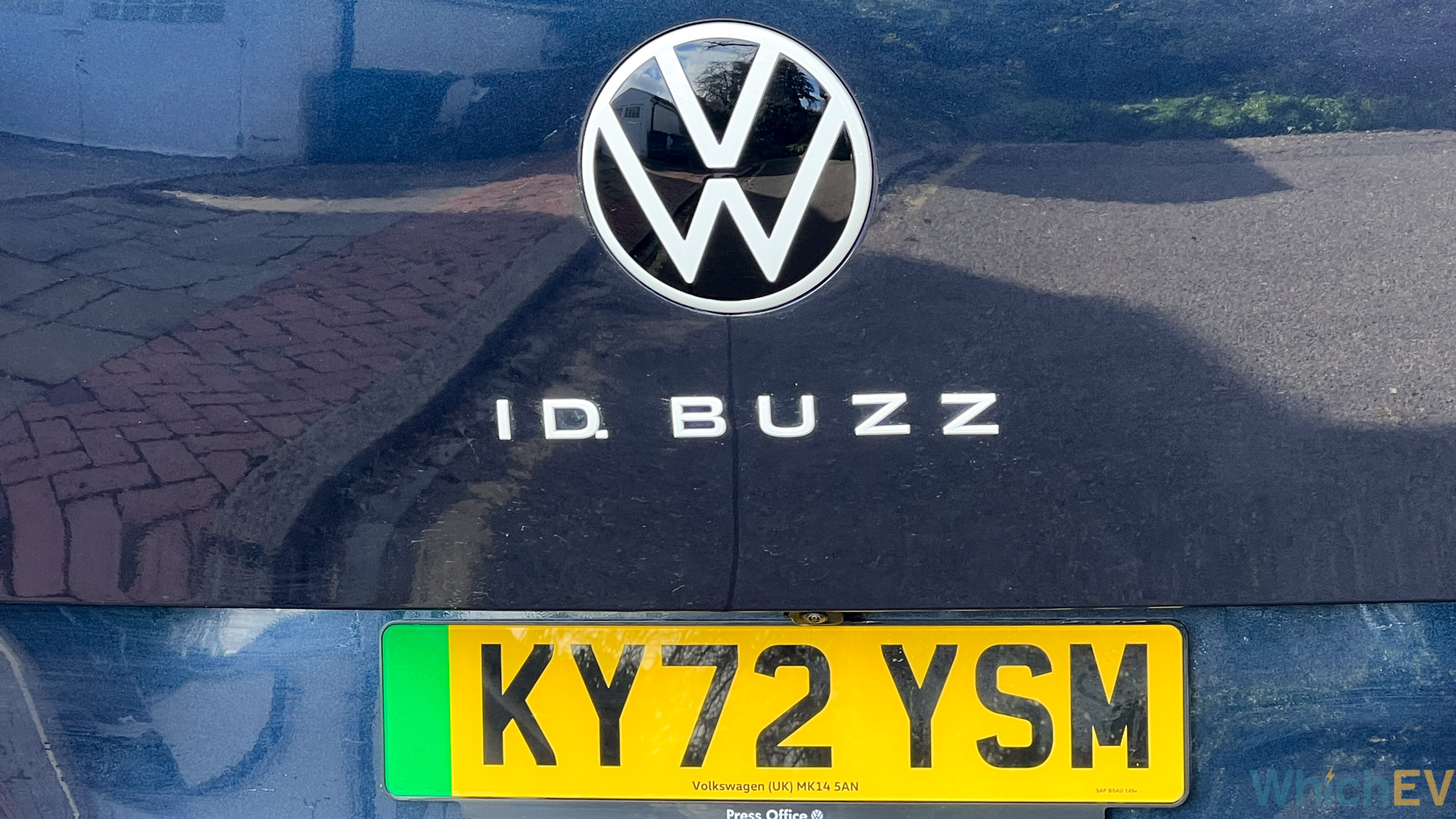
Now we get to the elephant in the room where the ID. Buzz is concerned – the price. The basic Life with no options is £58,915, and the Style starts at £63,715. Our press car was the Style trim, but with the 21in Bromberg wheel upgrades costing £515, the £1,560 Infotainment Package Plus and ArtVelours comfort seats. The overall cost came to £69,265, which is a lot for a van. When you consider what else you can get for that kind of money, you do have to ask whether the Buzz is worth its price. A Tesla Model Y Performance would be over £9,000 cheaper and the Tesla Model Y Long Range over £16,000 less.
Considering that this is essentially a large five-seater in its current form, it’s hard to justify the price in the Volkswagen ID. Buzz’s current form. There is a long wheelbase version in the wings that will bring with it a seven-seat option, bigger battery, VW’s upgraded motor, the potential for all-wheel drive, and a factory camper configuration. So this is still a work in progress.
Exterior Design
We’ve already commented on how the Volkswagen ID. Buzz is channelling the spirit of the original Type 2 camper van, known as the Bus in the US and Bulli in Germany. This isn’t the first EV to evoke the past to give the present more character, but we think VW has done a good job here. While it still has family resemblances to the ID. 3 and 4. There are also lots of attractive touches that make this van look more interesting, like the two-tone paint option and flashes on the rear pillar.
The design feature that appeared to divide opinion in the people we asked was the grille at the front, which sticks out quite far beyond the rest of the car. But in general, we love the way the Buzz looks, although design is a subjective thing so you will have to make up your own mind, and a lot about this vehicle hinges on this aspect.
You should also bear in mind that this is a big car, although not as long as you might expect (wait for the long wheelbase version for that, about which more later). It's 4.712 metres in length, which is a little shorter than a Tesla Model Y. But it's over 25cm taller than the Y, and with the cab starting so far forward, there's a considerable amount of interior space available – which we will get to shortly.
Overall, the striking appearance and spacious van format of the ID. Buzz are key considerations when deciding if you can tolerate its high price.
Interior Comfort
The van format and EV skateboard design means there is a ton of space inside the ID. Buzz. The seating positions are high, so you have running boards to help get into the front, although we think they could have done with being further out when getting out of the vehicle in a tight space. The front cabin is a great place to be. You get an excellent view of the road with surprisingly good all-round visibility. Adjust the mirrors correctly and you get clear sight down the side of the van too.
There are loads of interior upholstery choices for either trim level. The ArtVelours seat material in our test car is a premium option, costing £1,280 extra on the Life and £225 on the Style. It’s a microfibre leather-like upholstery. There are no real leather options, but ArtVelours has a nice feel and is easy to clean. Whichever trim you go for, the seats are heated. They are electrically adjusted with two memory position buttons for driver and passenger. The driver’s position can also be attached to a software profile within the infotainment screen’s car configuration menu.
There are lots of welcome little usability touches. There are two cupholders sitting on a door that can be shut, although it's quite hard to reopen again once you do. There’s something that looks like a covered coffee thermos included but is in fact an ashtray. VW appears to be catering for smokers, although there is no cigarette lighter included.
There's a little secret compartment in the front of the central storage unit, then a selection of spaces on the top, including movable partitions that enable you to add yet another cupholder. You can also entirely remove the central console if you want to make enough space for a person to go from front to back, or accommodate a really long item in the boot such as a ladder.
We particularly like the pocket in the dashboard for your phone, which also provides wireless charging. If your phone can't do this, you get a couple of USB ports and there's another one in the door for the passenger, all USB C. Since this car supports wireless Android Auto and Apple Car Play, you can simply place your phone in the pocket to use its capabilities, which is very convenient. There’s also a usefully sized glovebox.
The rear passenger space is accessed via sliding doors. The mechanism is smooth, but we do wonder why such an expensive vehicle doesn’t have electrically assisted sliding doors, even as an option. With the door open, it's easy for rear passengers to get in and out. Head and leg room are superb, and even tall adults will be comfortable in the back of the Buzz. This is also one car where the middle seat is a decent width so you could have three adults in the back on a long journey without too much complaining. However, the central seat back doesn’t fold down to create an armrest. The two outer passengers do get a tray table with cupholder that folds out from the back of the seat in front, however.
Rear seat passengers get a whopping four USB C ports for their devices – two in each door. One thing they don’t get, however, is any control in the rear for air conditioning, or even vents in the back. In fact, the rear door windows can’t be lowered either. Another surprise is the lack of a panoramic sunroof, even as an optional extra. You don’t need this so much as some cars to add a sense of space in the rear, but you might still want one.
The biggest surprise of all is that so far there is no seven-seat option for the ID. Buzz. With the amount of space in the rear of this car, it’s a major omission – and there are even cupholders and cubbies behind the rear seats as if ready for that extra row of seats. This will allegedly arrive with the longer wheelbase car. But without this facility, the ID. Buzz is essentially a five-seater SUV with a huge boot, which we will discuss next.
Storage and Load Carrying
So, about that boot. It’s massive. Absolutely massive. Even with the rear seats up, you get 1,121 litres – about as much as a respectable hatchback with its rear seats down, and more than any SUV we know of. That said, the capacity is without the rear raised floor, which is useful to have because you can slide all manner of drawers underneath. You can also easily unscrew and remove it to get the full amount of space.
You might want to keep it in, though, because without it, you get a ridge when you drop the rear seats down. Once you do that the total space without the adjustable boot floor is a whopping 2,205 litres, way ahead of any SUV except the Tesla Model X, although that's including the latter's frunk. The Buzz doesn't have a frunk, but you can add a retractable tow bar for £980. The towing capacity is up to 1,000kg braked and 750kg unbraked.
While you can't entirely remove the rear seats and turn the Buzz into a full cargo vehicle (you will need the Cargo variant for that), carrying capacity is huge, giving it a class-leading advantage in this area. This is a clear unique feature and fits the Buzz heritage. If you need to shift loads of kit to go camping or for sporting activities, it will be brilliant.
The cockpit controls are similar to other VW ID. cars. The steering wheel has adaptive cruise buttons on the left and media or instrumentation controls on the right. The latter still lacks a discrete button for muting audio, which we consider a near-essential feature. The left-hand steering wheel stalk controls lights, indicators, and windscreen wipers all in one. Like a Tesla, you just depress the brake to start the system, although there is a separate button as well. The right-hand stalk provides motor mode controls on the right via a rotating knob, providing drive, B-mode, neutral and reverse, plus a button on the end for park.
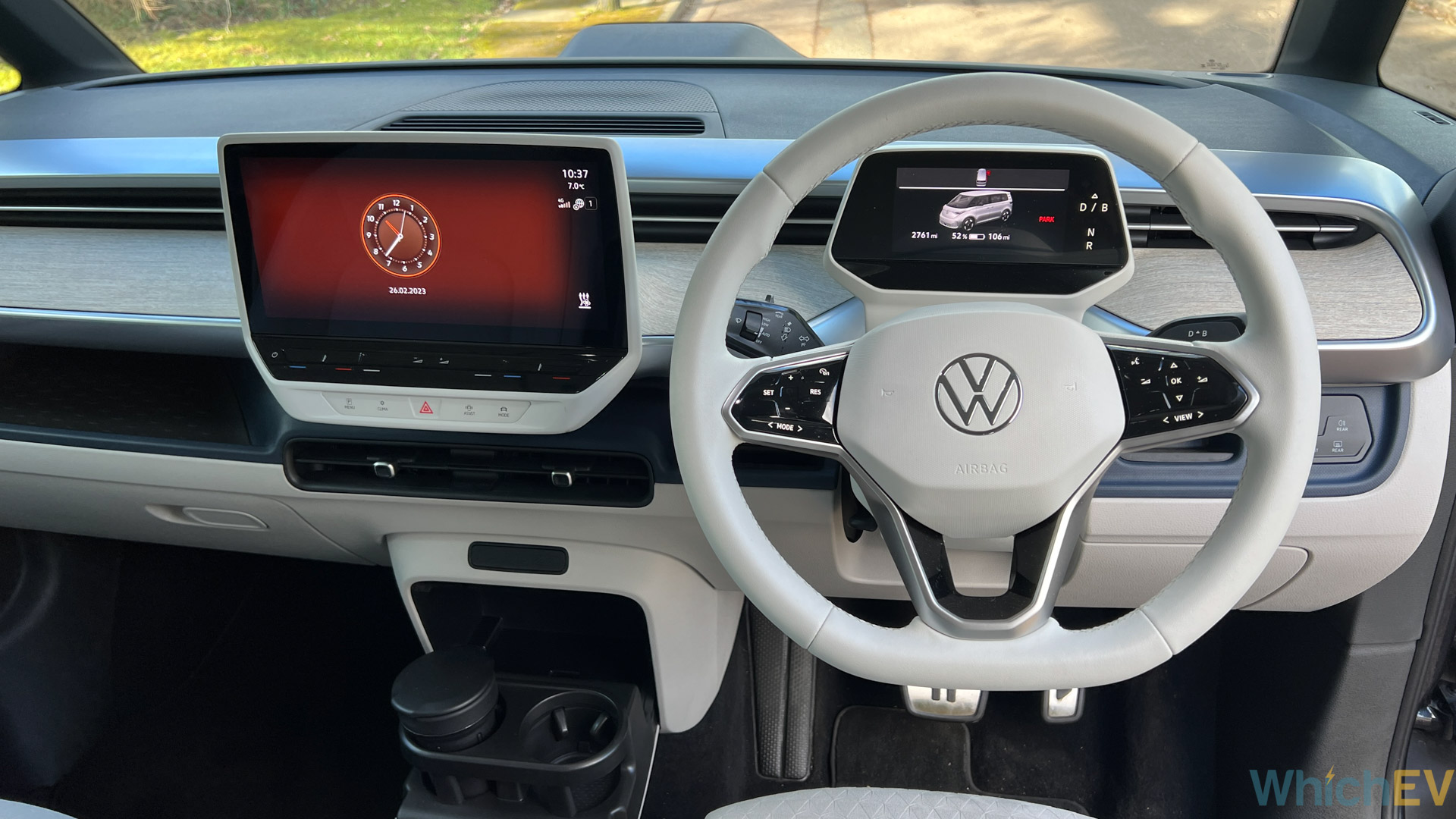
There are slightly cheap looking membrane buttons for lights modes and the heated windscreen on the right. This is standard for a VW ID. car. One thing we couldn't find was any way of turning on auto hold. Other ID. cars we've tried have this and it may be buried in the menu interface, but an obvious discrete button would be useful. Mercedes tends to hide this function behind a hard press of the brake pedal while stationary, but that isn’t the case for VW.
There are some discrete air conditioning controls beneath the 10in infotainment panel, but more detailed adjustment will require use of the touchscreen. This is a reasonably well laid out system that includes a home screen with a single press to core functions such as media control, satnav, and your linked phone. A block of buttons takes you to the icon-driven configuration sections, which are laid out relatively logically. There’s a separate physical mode button for calling up Eco, Normal and Sport options. Check out the video above for a more detailed tour of the infotainment interface.
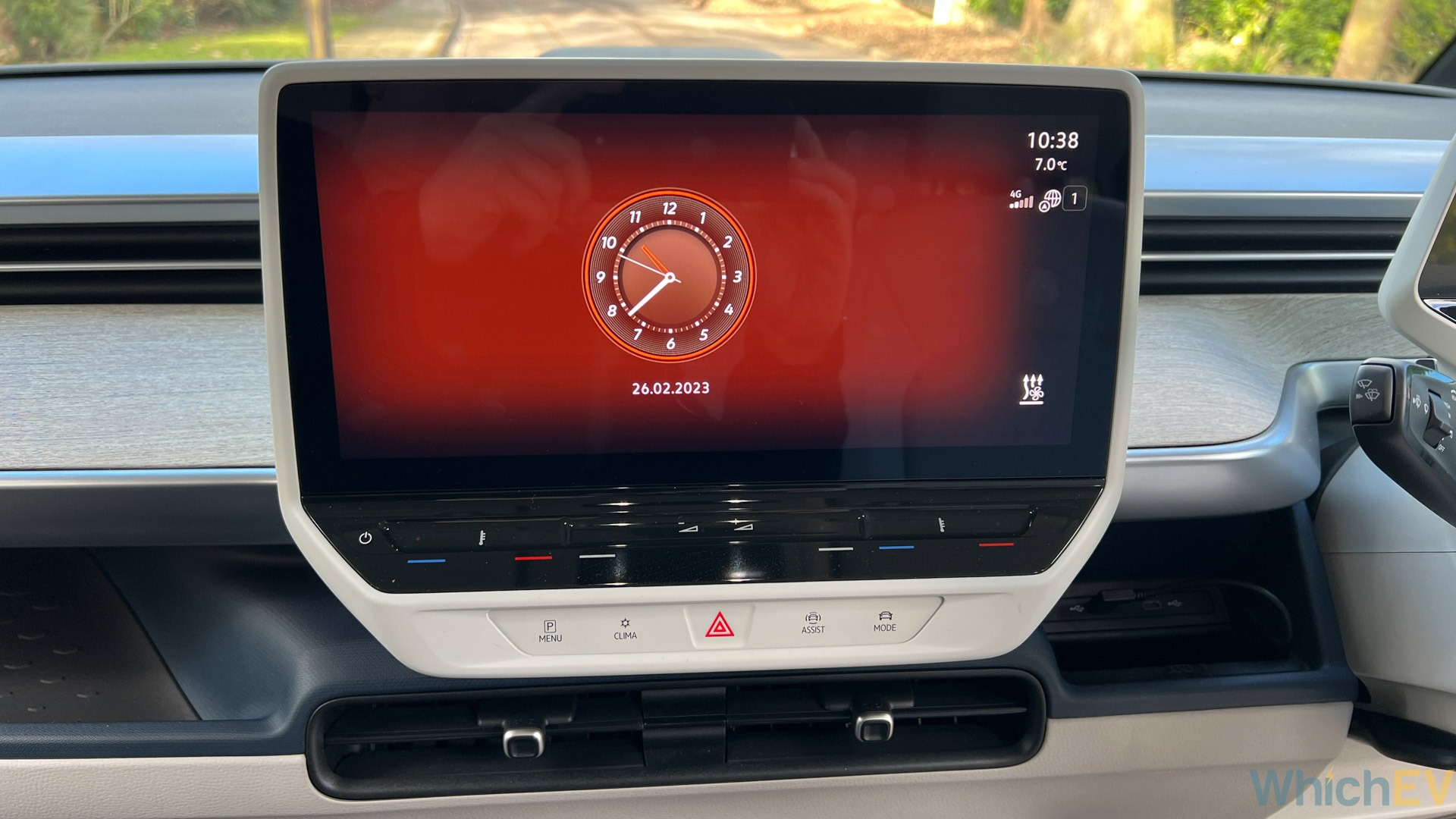
There’s also additional functionality available via VW’s connected system. We don't normally get given app access for most of the EVs we test, but VW did enable this with the Buzz. The software is called We Connect and it's not as extensive as Tesla's app but having remote access to charging controls and air conditioning is handy. You can't lock the car, but you can locate it and send destinations to the satnav, as well as interact with VW's WeCharge partners. The map lets you know live charger availability nearby and price, but only if you're logged into your charging account.
Performance and Driving
The ID. Buzz is a big van, so it’s no surprise that it’s not very fast. It may have 204PS and 310Nm of torque, but it weighs 2.5 tons, so takes a sedate 10.2 seconds to hit 62mph. However, the torque is still immediate so accelerating off the lights feels reasonably quick. With the weight low down, it also doesn't roll in corners as much as you would expect a van to.
Once you get used to the size, the Buzz is reasonably smooth to drive around town, because the rear wheels are driven so the steering is light and there is no torque steer. B mode lets you almost drive single pedal, which makes it a shame we couldn't find auto hold to complete the experience. The ID. Buzz is a relaxed cruiser and is crying out for chilled single-pedal driving.
However, at faster road speeds and on motorways the Buzz also sits comfortably. Here the high position gives you great forward visibility, and rear visibility isn't bad, despite the fact that the rear window is a long way back from the driver. The all-round view and wing mirror coverage are excellent too. This will be a competent highway driver. Overall, the driving experience is relaxed and comfortable, rather than involved and absorbing. That's probably what you want from a family van.
Range and Charging
We are almost always disappointed by the range offered by the electric vans we have reviewed so far. Aerodynamics have a major impact on electricity consumption, and van shapes really don't lend themselves to low drag coefficients. That said, the Buzz's 77kWh battery gives it a WLTP range rating between 251 and 258 miles, depending on trim and wheel size choices, which is around the same as the original ID.3 Pro Performance. That’s definitely usable.
We took the Buzz on an 84-mile road trip across a range of local, dual carriageway and motorway roads in Comfort mode, driving neither frugally nor aggressively. The temperature was around 8C. The Buzz averaged 2.7 miles per kWh, implying a range of over 200 real miles is possible, which is much better than any other electric van we've driven.
DC rapid charging is also supported up to 170kW, enabling an 80% charge in 30 minutes, so a stop every couple of hours on a motorway at a service station with rapid charging won’t be too onerous. AC charging is 11kW as standard, giving a full charge in 7 and a half hours. However, you will need three-phase power for that (which your company may have), but most home wall boxes will be 7kW, which will take more like 12 hours for a 100% charge.
There are rumours that the long wheelbase Buzz will have a larger battery option over 100kWh, which could mean a WLTP range of around 330 miles and over 250 miles in real world usage. That would be very usable indeed, although we dread to think what a 100+ kWh Buzz would cost.
Running Costs
VW quotes 2.93 miles per kWh, which may be possible on a good day in Eco mode. But you will easily get over 2 miles per kWh in less frugal modes, and we managed 2.7 miles per kWh, so economy isn't terrible, even if it's not exactly superb either.
The warranty is typical for a European car, with a basic 3 years or 100,000 miles. There's a three-year paint warranty and 12 years on the bodywork. You also get 3 years VW breakdown assistance and the typical 8-year, 100,000-mile battery guarantee. These are reassuring, but Korean and Chinese vendors are offering significantly longer basic warranties.
Safety
Although there are optional extras, we've been impressed since the arrival of the ID. cars that VW has provided a strong base level of safety tech. This includes adaptive cruise control, as well as automatic emergency braking with pedestrian and cyclist monitoring. The ID. Buzz has received 5 stars from Euro NCAP, too, which is reassuring.
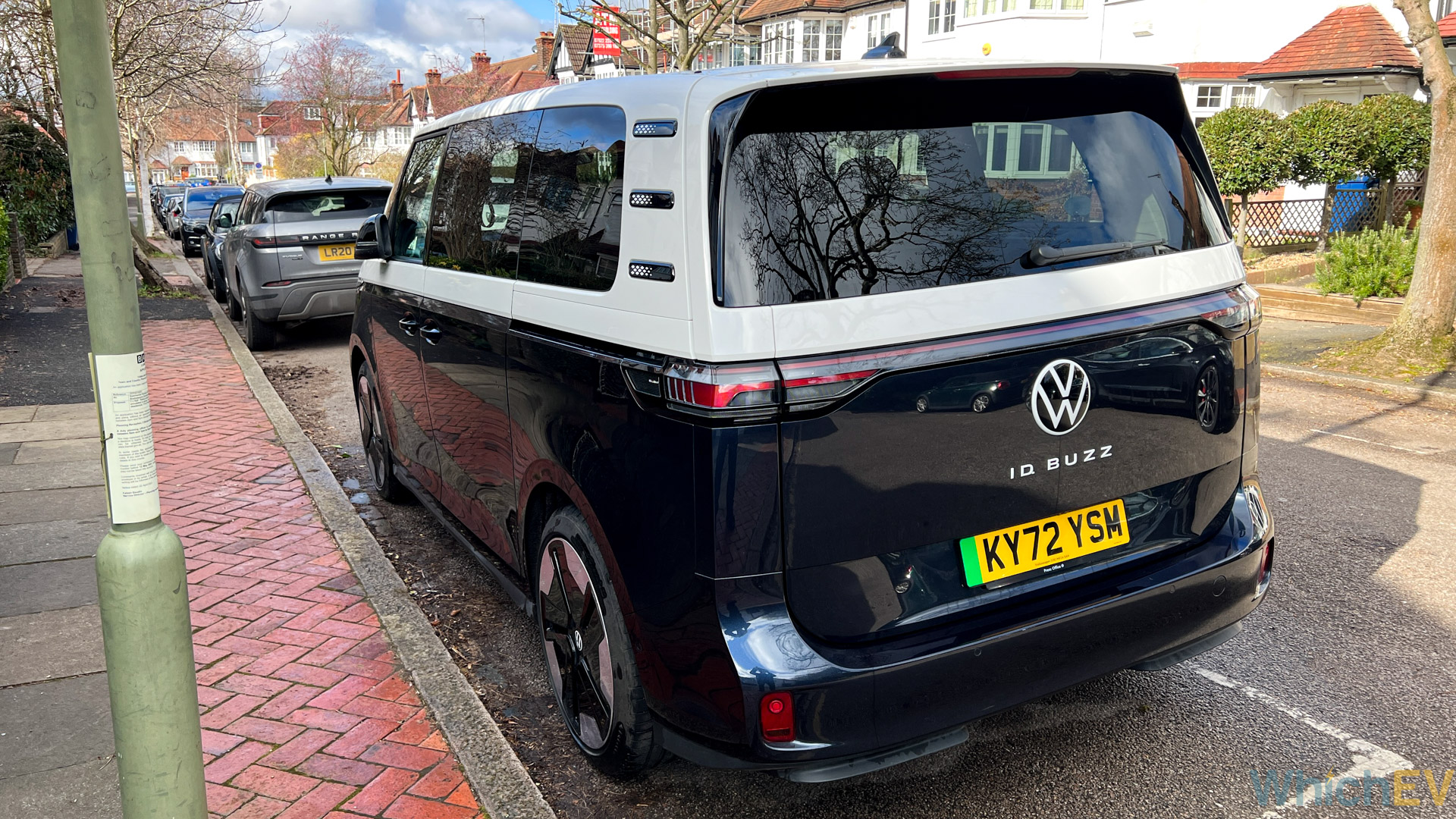
There is dynamic road sign display, although we didn't find this was always correct. You get Lane Assist and parking assistance with distance control. A rear parking camera is included as standard too – something we consider essential in a vehicle where the rear window is a long way from the driver.
The main optional extra here is the £1,425 Assistance Package Plus, which adds lane changing assistance, blind spot detection, and a 360-degree view for the reversing camera. But our review car didn’t have this package, just the basic camera.
| Price: | Life – £58,915; Style – £63,715 |
| Range (WLTP): | Life – 258 miles; Style – 251 miles |
| Charge time (7.4kW): | 12 hours |
| Charge time (11kW): | 7.5 hours |
| Charge time (170kW, 80%): | 30 mins |
| Battery: | 77kWh (usable) |
| On Board Charger: | AC – 11kW; DC – 170kW |
| Efficiency: | 2.97 miles per kWh |
| 0-62mph: | 10.2 seconds |
| Top Speed: | 91mph |
| Power: | 204hp |
| Wheels driven: | Rear wheel drive |
| Cargo: | 1,121 litres; 2,205 litres with rear seats down; towing – unbraked 750kg, braked 1,000kg |

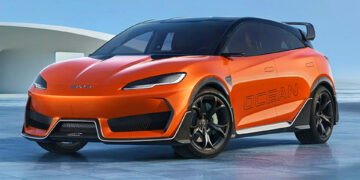
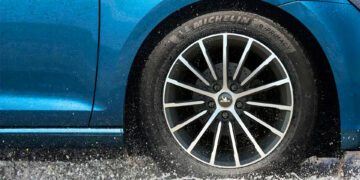

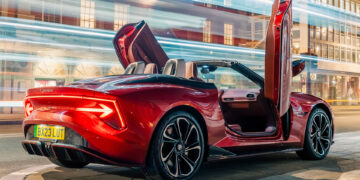

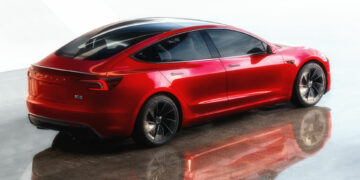


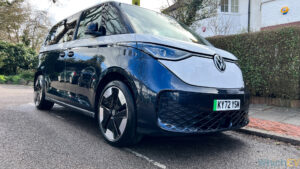
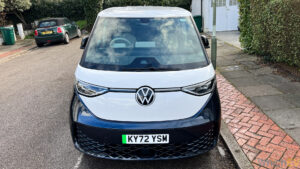
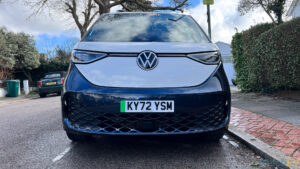
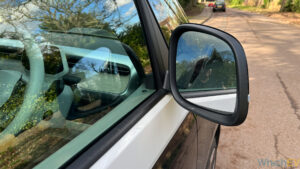
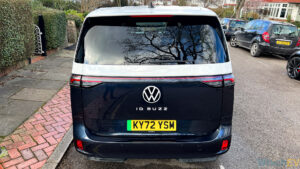
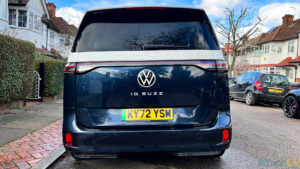
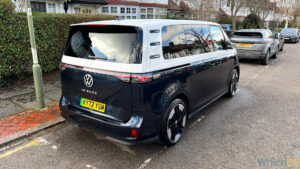
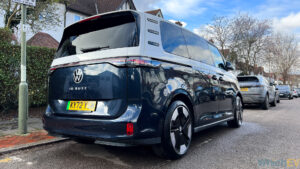
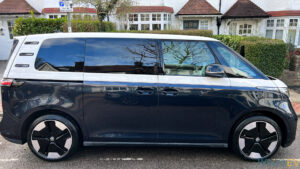
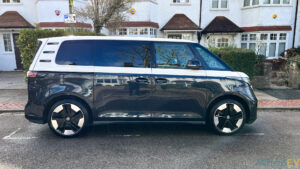
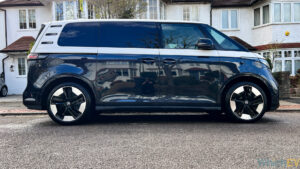
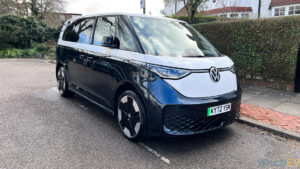
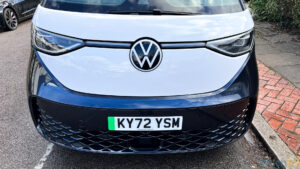
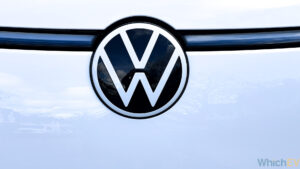
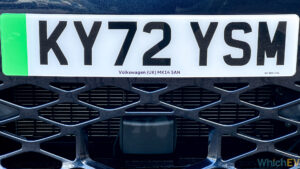
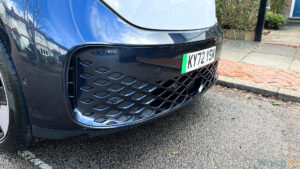
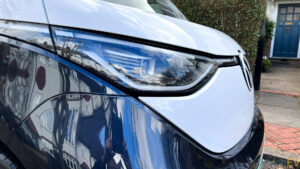
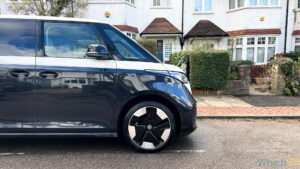
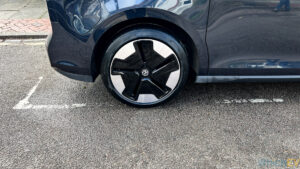
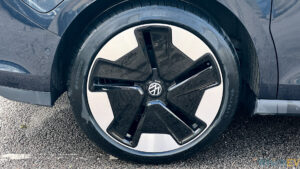
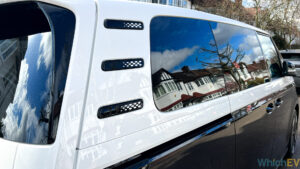
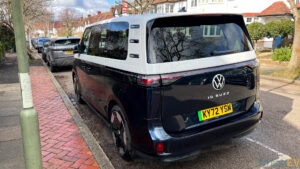
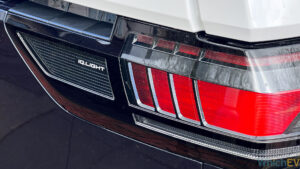
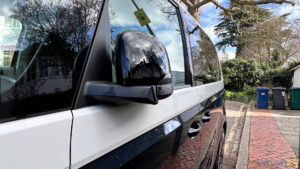
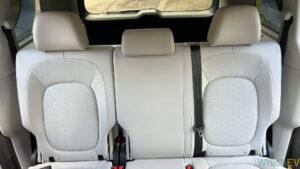

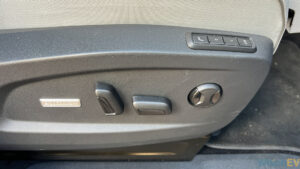
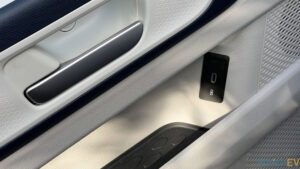

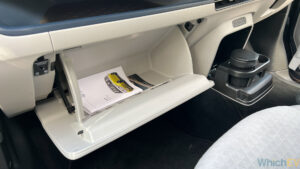
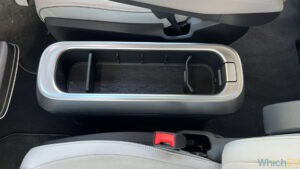
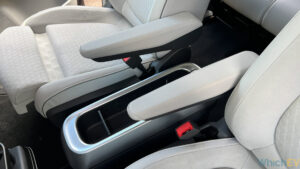
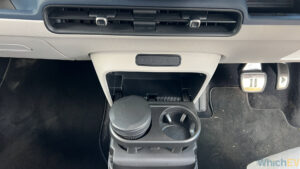

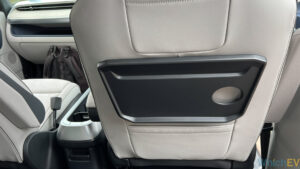
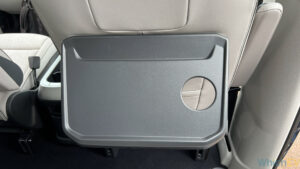
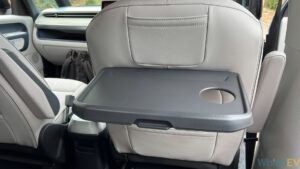
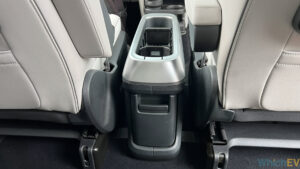
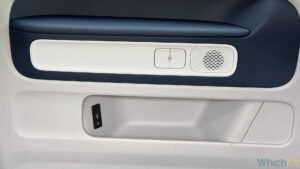
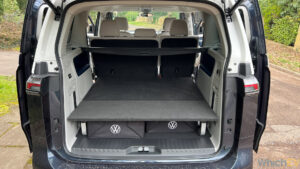
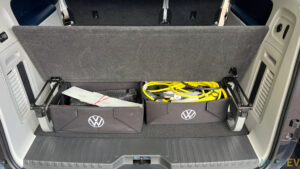
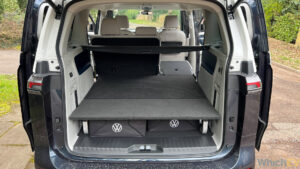
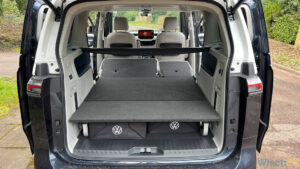
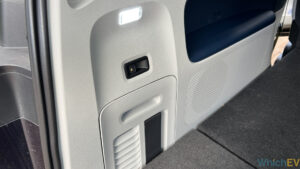
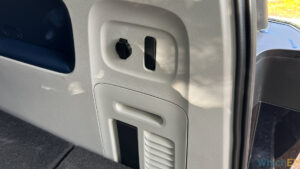
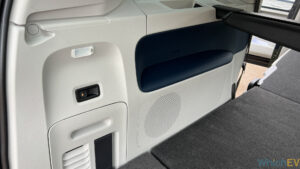
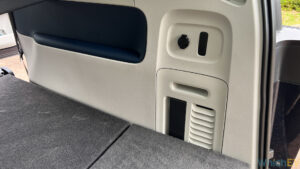
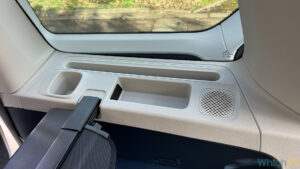

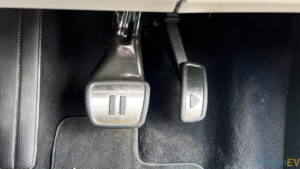
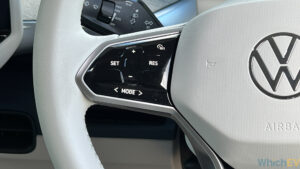
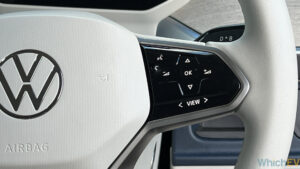
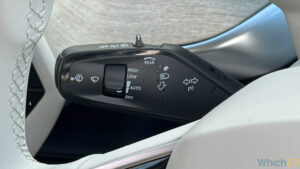
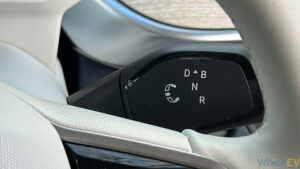
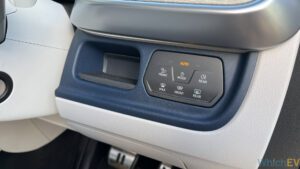
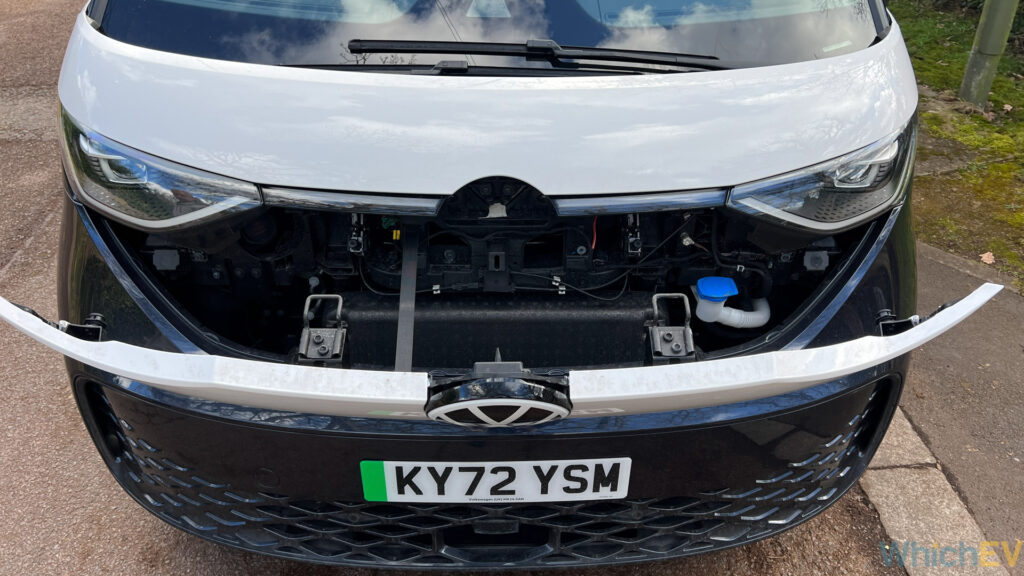
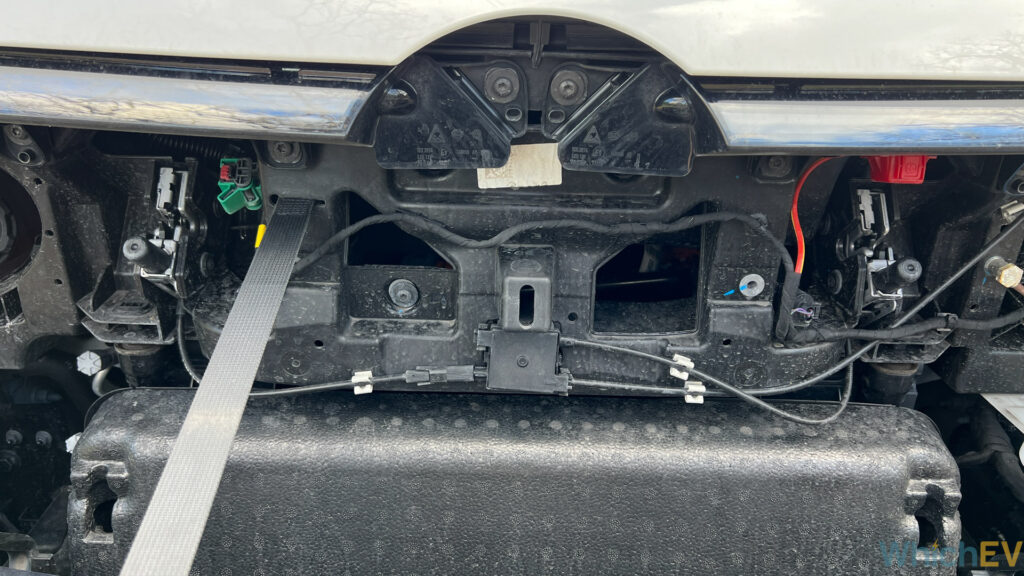
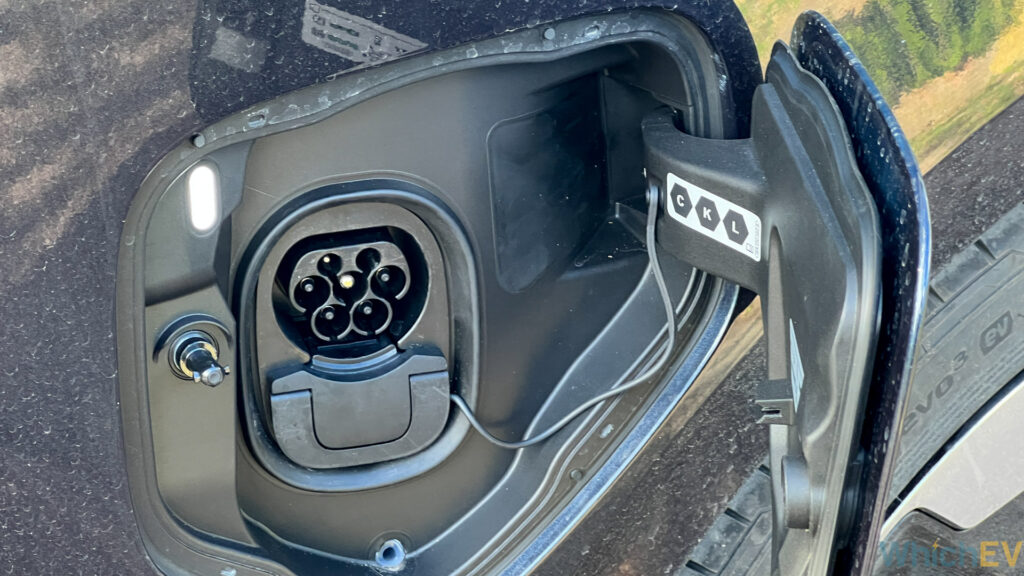
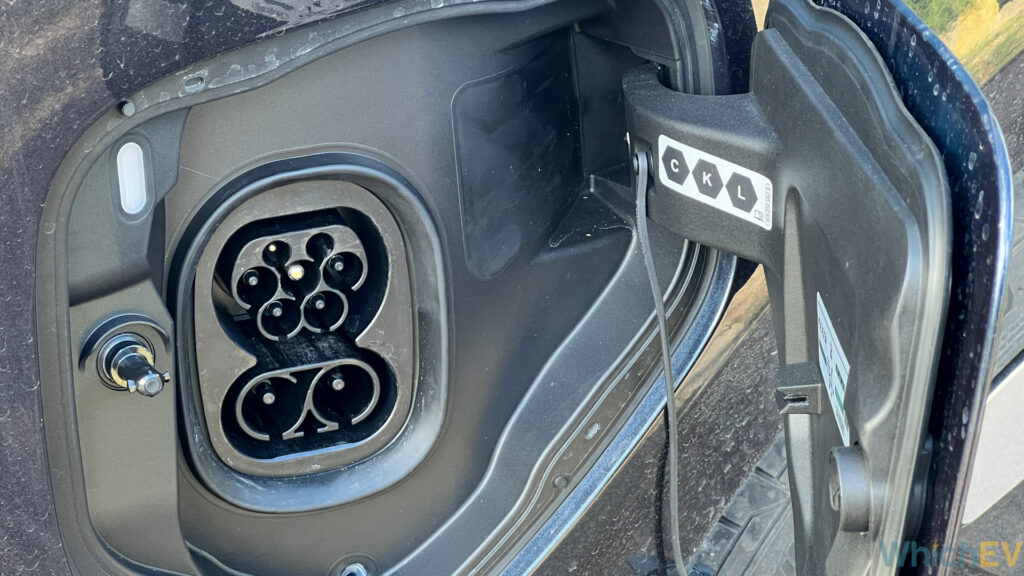






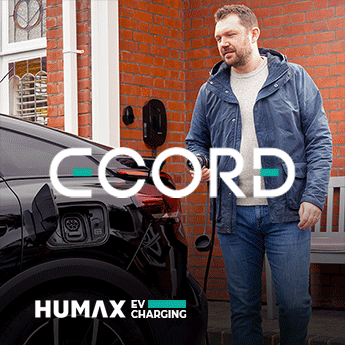



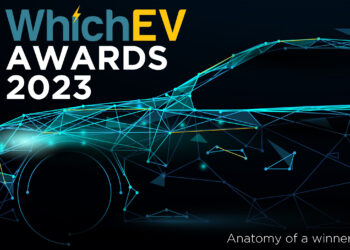
Discussion about this post